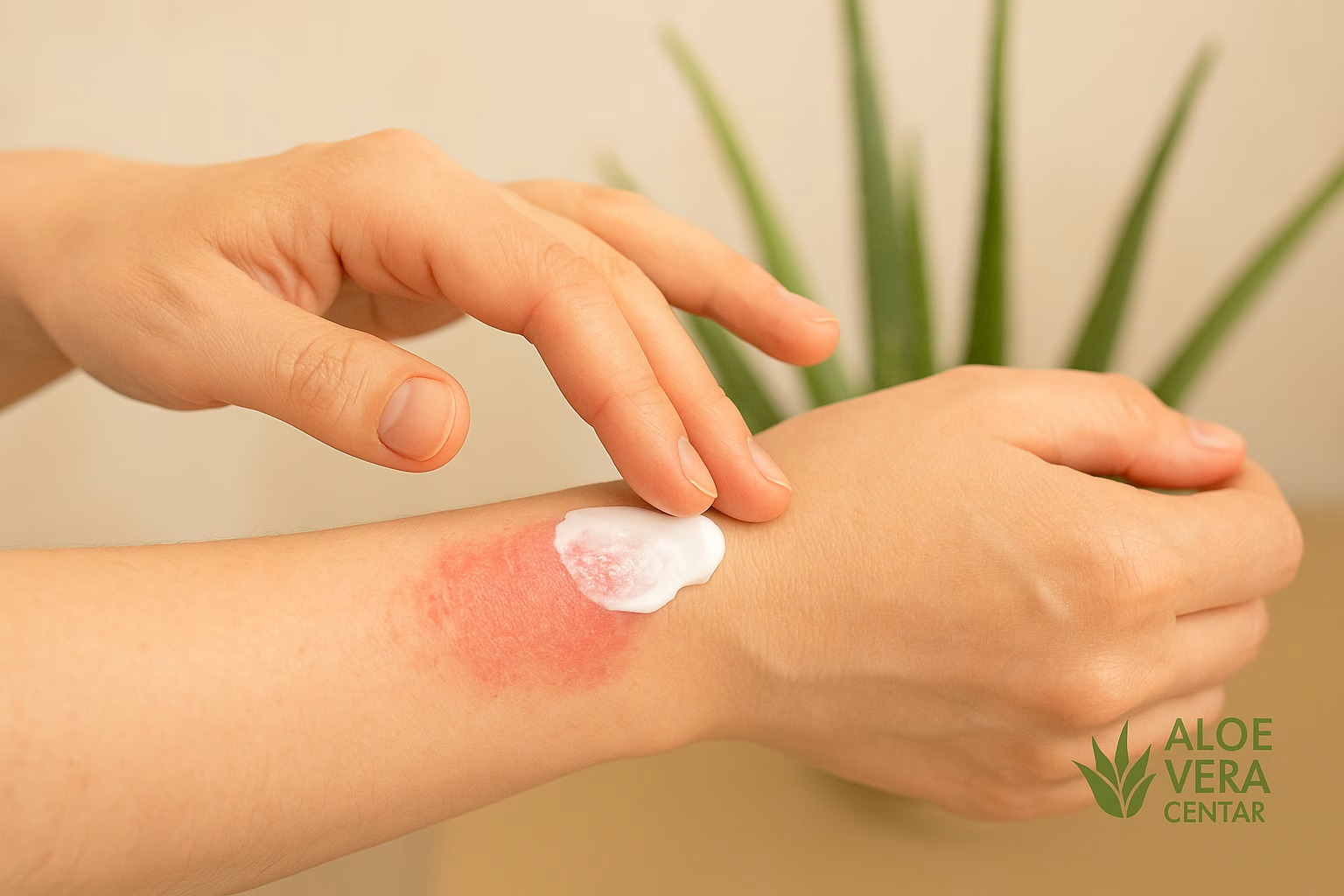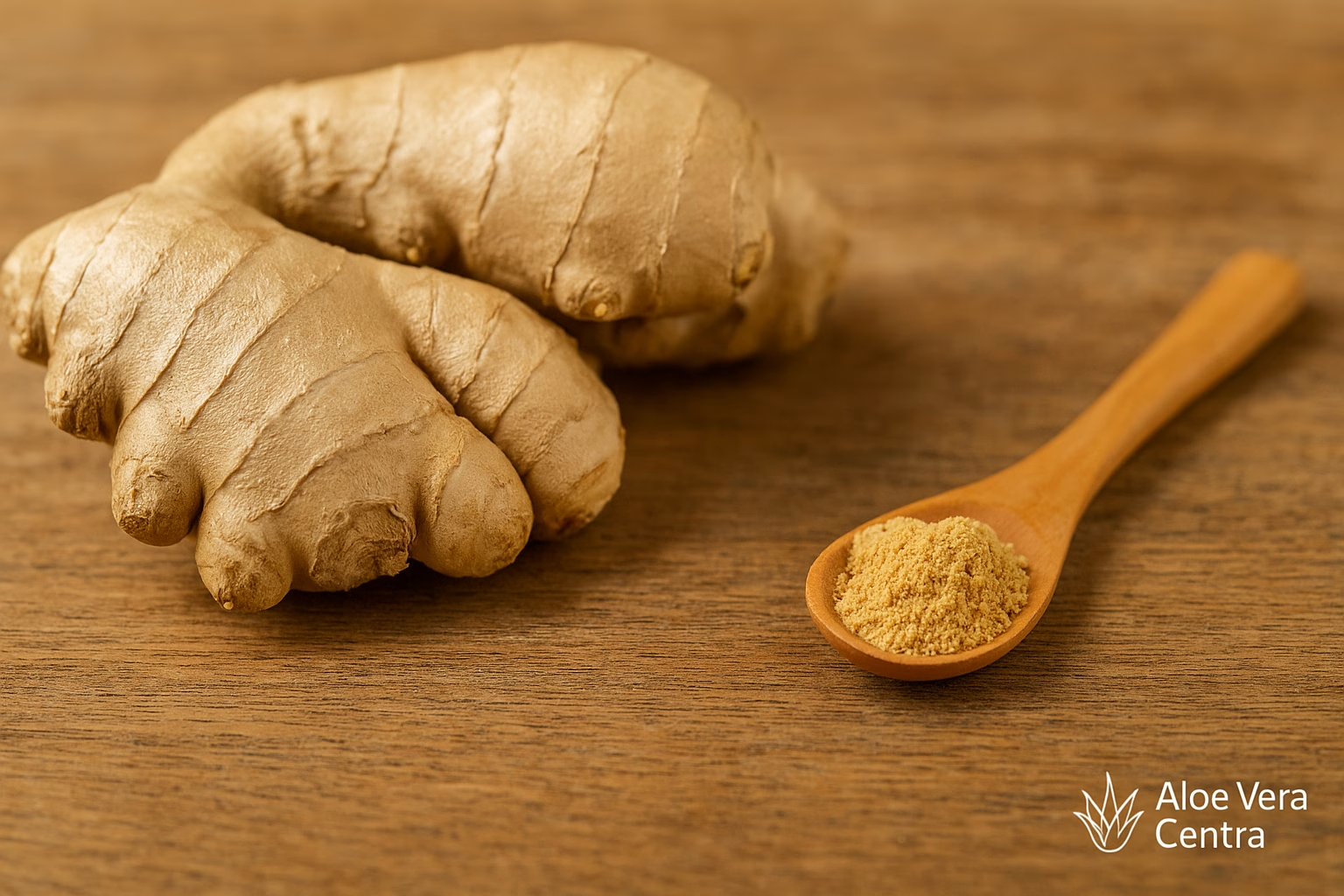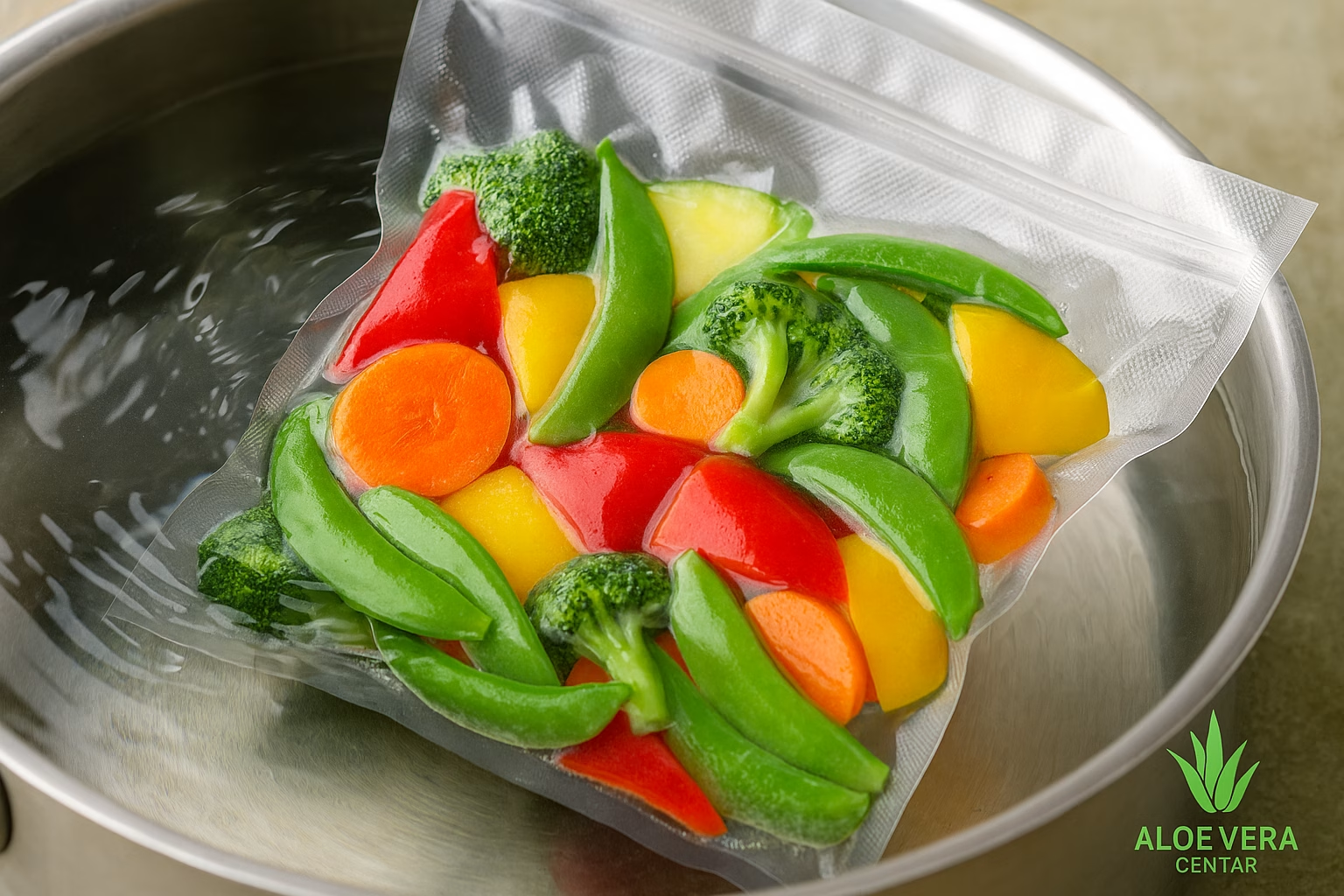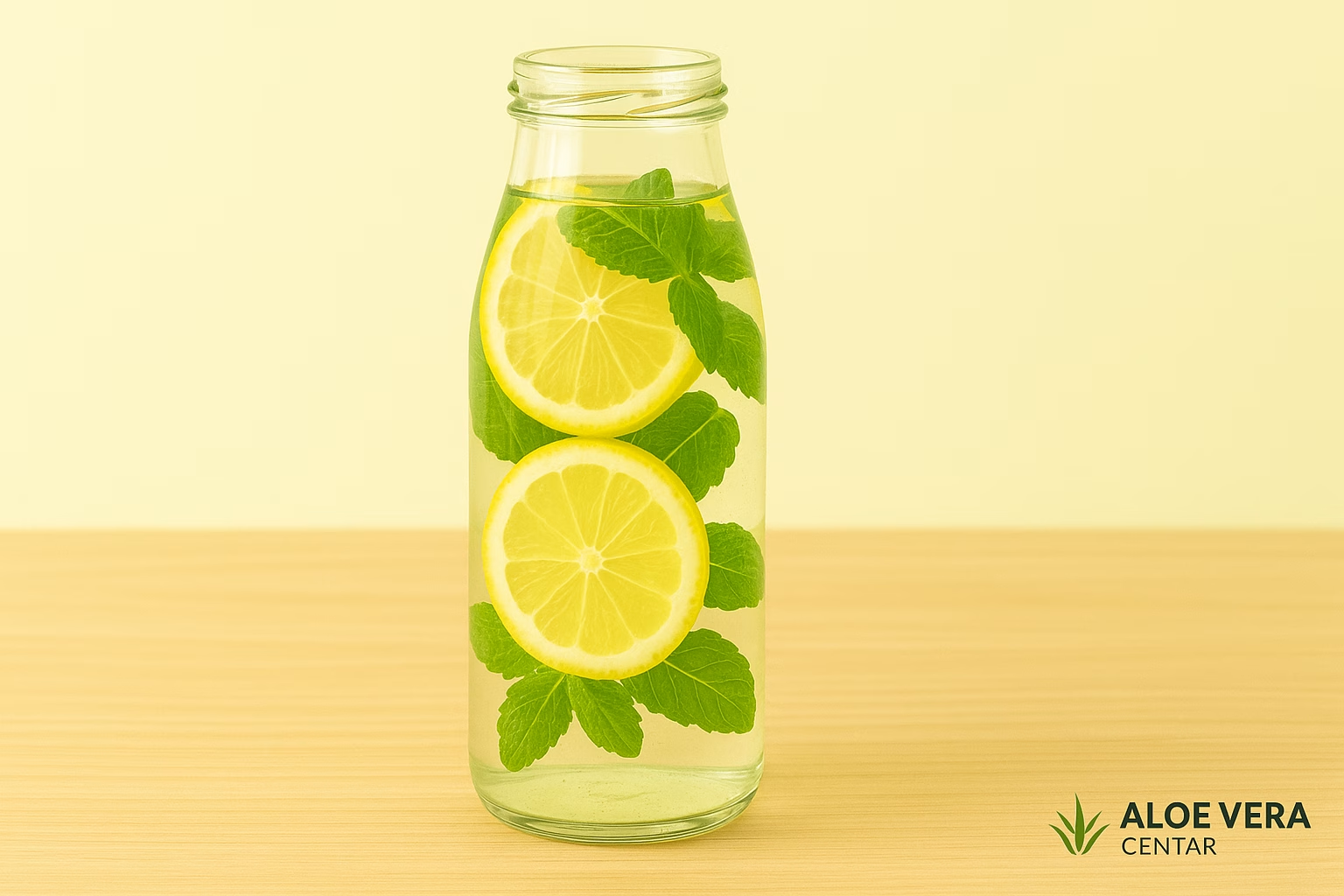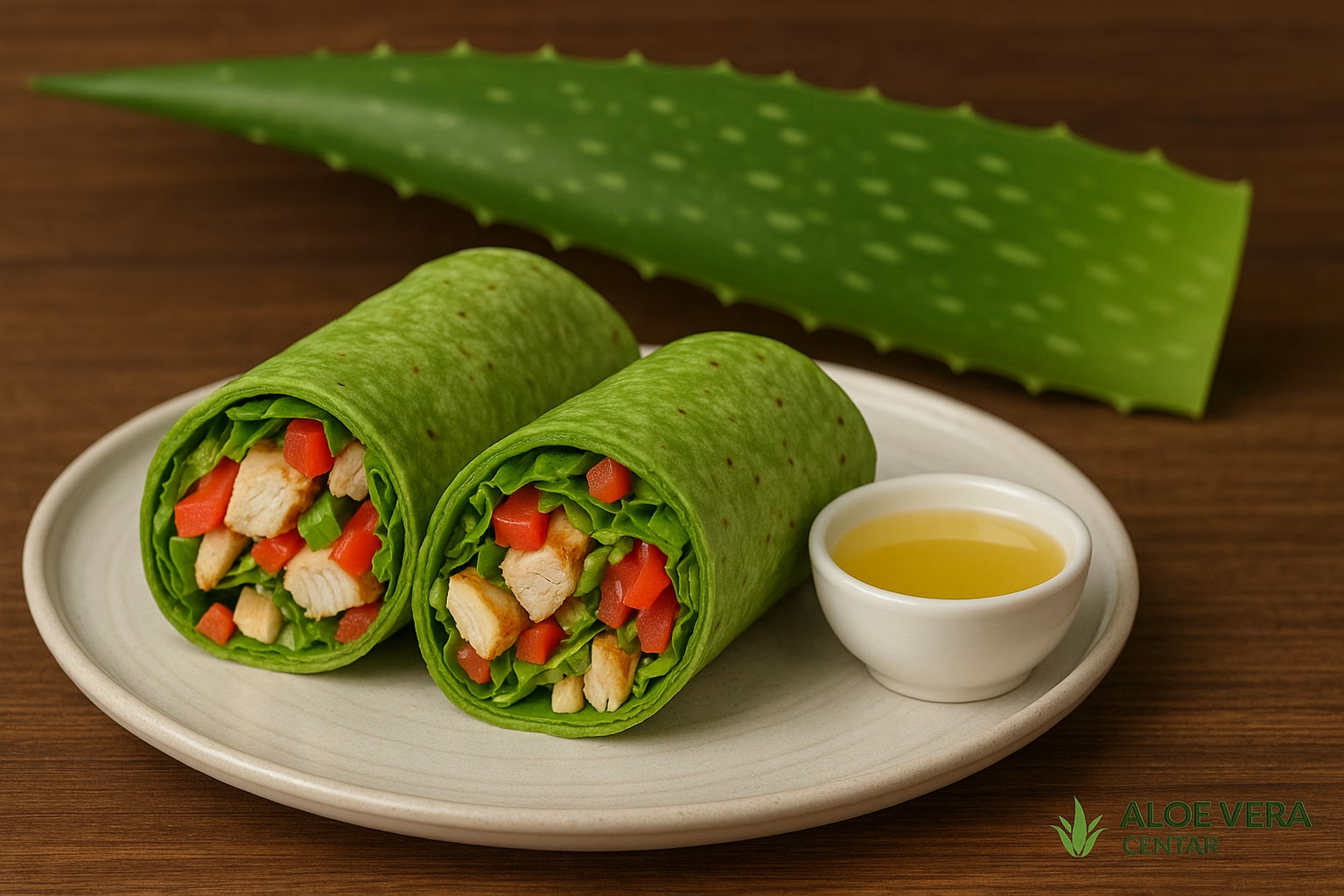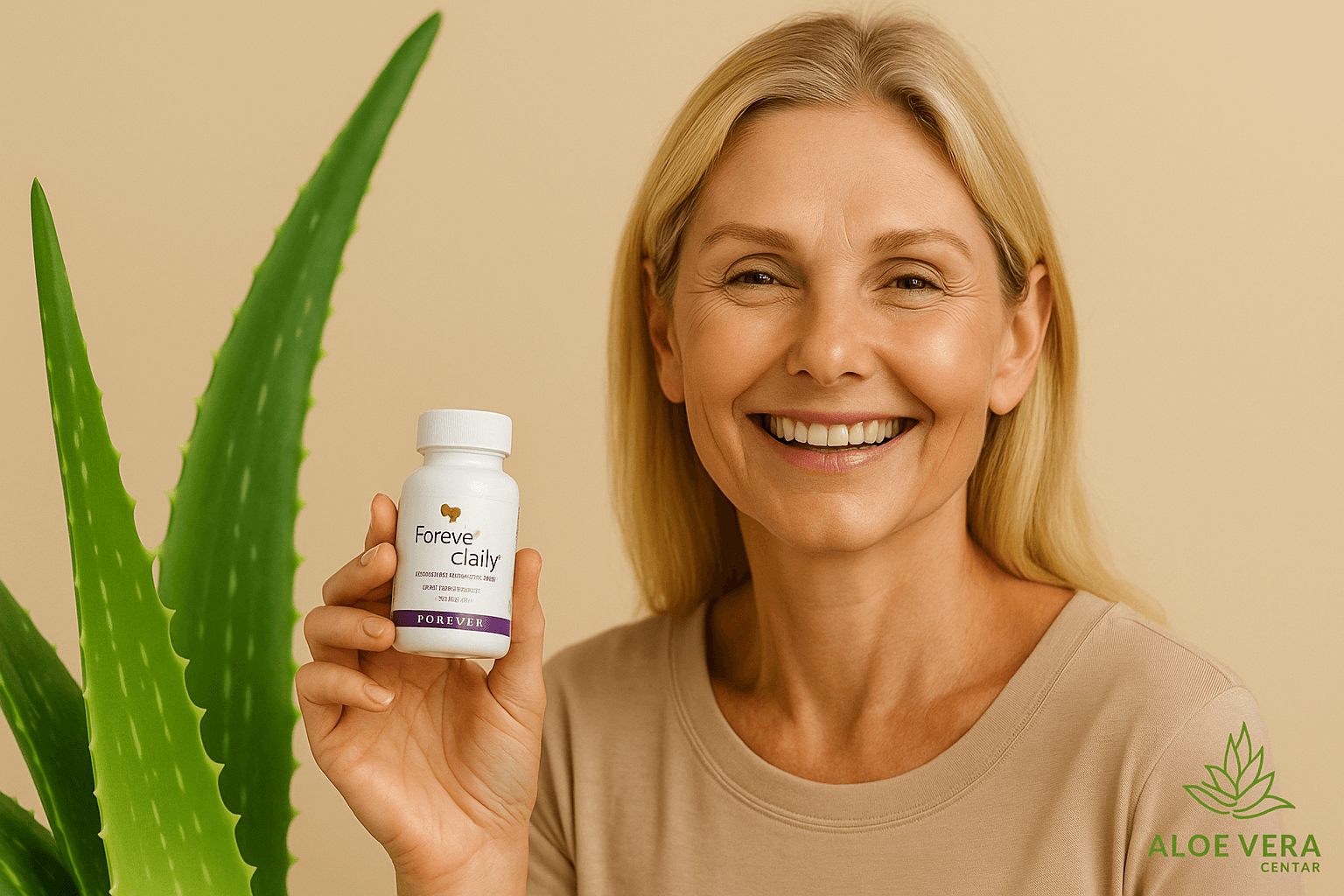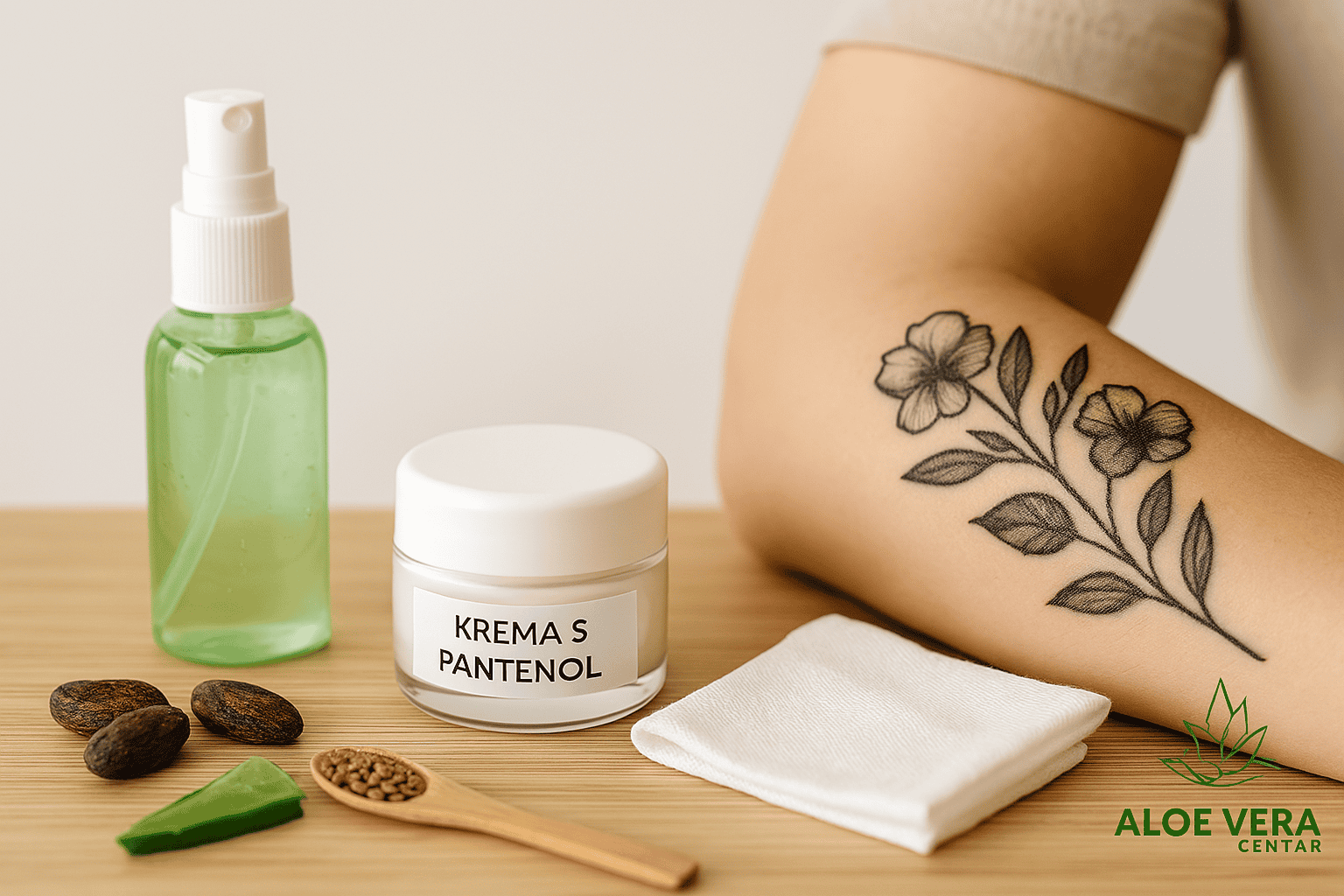
Care after the tattoo: how aloe and panthenol accelerate healing
After-tattoo care: aloe and panthenol – how effective are they?
Aftercare is essential to maintain the intensity of the color, prevent infections, and promote proper skin healing. Every tattoo, whether it’s a small symbol on your wrist or a complex design across your entire arm, is an open wound in the first few days after getting it. That’s why it’s important to know how to properly care for your new tattoo. Many people turn to tried-and-true ingredients like **aloe vera** and **panthenol**, most often in the form of creams, gels, and sprays. In this article, we’ll look at how effective they really are, how and when to use them, and other tips for comprehensive skin care after getting a tattoo. If you’re ready to learn all about safely healing and maintaining your new “skin art,” keep reading!
Why is post-tattoo care so important?
Tattooing is essentially a controlled “injury” of the skin, where a needle injects pigment into the dermis layer. The body naturally responds to this injury by initiating a healing process: clots form, the skin peels off slightly, and a new layer of epidermis forms over the pigment. During this period, the skin and the tissue underneath are very sensitive.
If you take inadequate care of your tattoo, the risks are multiple:
- Infections – Bacteria and microorganisms PubMed can penetrate the skin, causing redness, pain, pus, or more serious conditions.
- Color Fading – Lack of protection and hydration can cause some of the pigment to be “lost” during peeling.
- Prolonged healing – Without proper care, the skin takes longer to regenerate, which can be painful and uncomfortable.
- Permanent scars – If the healing process is complicated, a rough or keloid scar may remain, which spoils the final appearance of the tattoo.
This is precisely why tattoo artists often emphasize that post-tattoo care is almost as important as the tattoo itself.
Aloe vera and panthenol – what is the secret of their popularity?
When it comes to skin renewal cosmetics, aloe vera and panthenol (provitamin B5) are probably the two ingredients you’ll most often find in skin regeneration and soothing products.
Aloe vera: hydration and stimulation of regeneration
Aloe vera ( Aloe barbadensis ) is widely known for its **soothing and moisturizing properties**. Its transparent gel from the inside of the leaf contains hundreds of active components, including vitamins, minerals, enzymes, amino acids and polysaccharides. Thanks to them, aloe vera provides:
- Anti-inflammatory effect – soothes redness and swelling
- Hydration – prevents tissue drying out, which is especially important with tattoos
- Regeneration – stimulates cell renewal and accelerates healing
- Itching reduction – especially useful when the tattoo starts to peel
If you want to learn more about the healing properties of this plant, you can also check out our detailed article Aloe vera gel – healing properties and applications .
Panthenol: provitamin for skin renewal and elasticity
Panthenol (or provitamin B5) is highly valued in the cosmetics industry for its ability to **bind moisture**. In contact with the skin, it is converted into pantothenic acid, which deeply nourishes and regenerates tissue. That is why it is a very common ingredient in lotions, baby creams, burn sprays and, of course, after-tattoo care products.
Its main action is manifested in:
- Deep hydration – helps retain water in the skin
- Restores protective barriers – prevents further damage and bacterial penetration
- Soothes irritations – useful if itching or burning occurs
- Increasing elasticity – the skin remains softer and more resistant
How does aloe vera work on a fresh tattoo?
Immediately after a tattoo, the skin is particularly vulnerable: the pores are open and the micro-damages are fresh. In such a state, it is important to provide **gentle and soothing care** that will not further irritate or cause excessive scabbing. Aloe vera can help during this period in several ways:
1. Moisture regulation and soothing
As the tattoo peels, small scabs form. If the skin becomes too dry, the scabs can fall off prematurely, along with some of the pigment. Regular application of a thin layer of aloe vera helps the skin retain optimal moisture, prevents the scab from cracking, and facilitates the healing process.
2. Anti-inflammatory effect and protection against infections
Although aloe vera is not a strong antiseptic, its anti-inflammatory properties can reduce the initial inflammation that often accompanies a fresh tattoo. By combining it with other mild disinfectants (such as a mild antibacterial soap), you can further protect the skin from developing infections.
3. Reducing burning and itching sensations
Most tattoo enthusiasts agree that the most uncomfortable phase is when the tattoo starts to itch and peel. Aloe vera can relieve this discomfort without clogging the pores. Unlike some oilier creams, it won’t “suffocate” the skin, which is important for normal breathing and tissue regeneration.
The effect of panthenol on the healing process
If you take a look at most commercially available tattoo care creams, you will notice that they have panthenol on the list of ingredients. Why is it so prevalent in post-tattoo cosmetics?
1. Restoration of the protective barrier
A fresh tattoo is deprived of the “integrity” of the surface layer of the skin. Panthenol helps fill the “micro-gaps” and restore the hydrolipidic film that protects the skin from external influences. In this way, the skin is more resistant to bacteria, fungi and other potential irritants.
2. Accelerated healing and reduced inflammation
Panthenol is known to stimulate the synthesis of lipids and proteins in the skin, which can shorten healing time. It also reduces redness and inflammation, which is especially useful if the tattooed area is extremely irritated.
3. Additional skin flexibility
The new skin is prone to tightening. Panthenol increases tissue elasticity, so the skin “tightens” less and can more easily tolerate the natural movement of the body. This is important if the tattoo is on the wrists, fingers or places that bend.
How to combine aloe vera and panthenol in daily care?
When it comes to post-tattoo routines, many people wonder whether they should use aloe vera gel and panthenol together or just one. In fact, many tattoo care products already include both ingredients in one formula. However, if you have pure aloe gel and a separate cream with panthenol, you can apply them as follows:
- Clean the tattoo: Use lukewarm water and a mild antibacterial soap. Gently pat dry with a paper towel (do not rub).
- Apply a thin layer of aloe vera: This can be pure gel or a product that contains a high percentage of aloe. Wait a few minutes for it to absorb.
- Then apply a thin layer of panthenol (or a cream containing it): This will create an additional protective film and help preserve moisture.
You can adjust the interval between applying aloe vera and panthenol according to your own feelings. Some people’s skin “likes” to be well absorbed by the aloe first, while others apply the combined preparation immediately. The most important thing is to avoid over-applying thick creams, as excessive “suffocation” of the skin can slow down healing.
How long does it take to cover a tattoo?
The healing process of a tattoo can take anywhere from 2 to 4 weeks, depending on the size, location, and your body. During the first few days (usually 3-5 days), it is crucial to prevent infections and ensure that the skin does not dry out. In the following weeks, the skin flakes, itches, and forms a new surface layer.
The general rule is: **care for it until it is completely healed**. Even after the tattoo visually appears “normal”, it is recommended to continue to apply a mild moisturizer (can be a regular lotion) from time to time to keep the color fresh and the skin supple.
Advantages of natural products compared to “classic” creams
There are a variety of ointments and creams on the market for tattoos, some containing antibiotics, others containing harsh ingredients that can cause irritation. Ingredients like **petrolatum** (Vaseline) can create an overly “suffocating” barrier and prevent the skin from breathing, which is not ideal. On the other hand, natural options (like aloe vera and panthenol) are often safer and gentler:
- Less likely to cause allergies – However, even with natural ingredients, caution should be exercised by people prone to allergies.
- Versatile action – Aloe vera and panthenol can also be used for other skin problems, e.g. burns, irritation, dryness.
- Better hydration without “congestion” – They allow the skin to breathe and regenerate with a dose of moisture and nutrients.
Of course, there are differences in quality among natural products, so it’s important to choose those with a high aloe vera content (at least 90% pure gel) or panthenol (e.g. 5% or more).
Related Forever Living Skin Care Products
If you are a fan of the Forever Living range or are already familiar with their aloe vera-based products, consider the following options:
- Forever Aloe Vera Gel – a popular drink for internal use, which can promote better skin regeneration from within.
- Forever Aloe Propolis Creme – a cream rich in aloe and bee propolis, which can provide additional protection and hydration for the skin, but be careful not to apply it while the tattoo is completely fresh (the first 2-3 days), but after the initial healing.
For additional tips on aloe vera and its use in various situations, see the article Aloe vera gel – healing properties and uses on our website, where you can explore in more depth all the potential of this plant in cosmetics and skin care.
Other tips for successful tattoo healing
1. First phase (first 48 hours)
After you leave the tattoo parlor, you will be given a protective film or bandage. Keep it on for as long as your tattoo artist recommends (usually 2-4 hours, sometimes longer, depending on the size and technique). Once you remove the film, clean the tattoo with mild soap and lukewarm water, pat dry, and apply the first layer of aftercare cream or gel.
2. Keep your skin clean
Wash your hands before touching your tattoo. Use clean towels or paper towels. Avoid tight clothing and friction, as this can irritate a fresh tattoo and interfere with healing. If you play sports or work in a dusty environment, consider wearing a protective mask and washing your skin regularly after activity.
3. Do not rub or forcefully remove the shells.
In the second or third week, the tattoo will start to peel. This is completely normal. Do not “peel” the scales with your hand, as this could pull out the pigment. It is enough to regularly apply moisturizing products to allow the peeling to occur naturally.
4. Stay out of the sun and swimming pools
UV rays can fade a tattoo before it even heals. It is recommended to avoid sun exposure for at least 2-3 weeks. Also, swimming pools and jacuzzis (due to chlorine and bacteria) are not recommended, as they can slow down the healing process and increase the risk of infection.
5. Take care of your diet and general health
Getting enough sleep, drinking plenty of fluids, and eating a balanced diet will help your skin a lot. If you want extra support for your skin from the inside, consider omega-3 fatty acids (e.g. Forever Arctic Sea ) or a quality collagen supplement.
6. Check the reactions
If you notice excessive redness, unusual discharge, swelling, or severe pain, contact your tattoo artist and, if necessary, your doctor immediately. The wound should gradually heal, not intensify the pain and redness.
Frequently asked questions (FAQ) about post-tattoo care
1. Can I use creams with aloe vera and panthenol immediately?
Most tattoo artists recommend waiting at least a few hours or until the first cleaning (when you remove the protective film) before the first application of the cream. After that, aloe vera and panthenol are completely safe to use. Just make sure your hands are clean and apply sparingly (a thin layer).
2. Is it better to use pure aloe vera gel or ready-made creams?
If you have access to a quality, certified gel (with minimal additives), then pure aloe gel is a great choice. Otherwise, reliable creams or gels with a high percentage of aloe and added panthenol or other soothing ingredients can also be excellent. Make sure the product does not contain alcohol or strong fragrances that can irritate.
3. How often should I lubricate my tattoo during the day?
The recommendation is usually 2-5 times a day, depending on how dry your skin is and what you are used to. It is important not to overdo it – too thick a layer can “suffocate” the skin. As soon as you feel tightness or itching, you can apply a thin layer to soothe the skin.
4. What happens after the tattoo is completely healed?
Once the tattoo has passed the peeling stage and there are no more open wounds, you can switch to classic skin care. However, if you want to keep the color as intense as possible, it is recommended to continue applying moisturizers occasionally and use sunscreen products (e.g. SPF 30 or 50) when exposed to UV radiation.
Conclusion: aloe and panthenol as a “golden combination” of post-tattoo care
The combination of aloe vera and panthenol is very popular due to its effectiveness in soothing the skin, accelerating healing and maintaining optimal hydration. Of course, you should take care of hygiene, properly cleaning the tattoo, avoiding the sun and other potential irritants. If you are planning to purchase quality aloe vera-based products or are looking for supplements that will help your skin “embrace” your new tattoo as soon as possible, be sure to consider the proven options from the official Forever store , where you can get a 15% discount and find various natural formulations with aloe vera.
With good care and a little patience, your tattoo will retain its beauty and vibrant colors, and your skin will heal quickly without any unwanted complications. Enjoy your new tattoo and wear it with pride!
**This content is not a substitute for professional medical advice. If you have any concerns or complications related to your tattoo, please consult a professional tattoo artist or doctor.**

